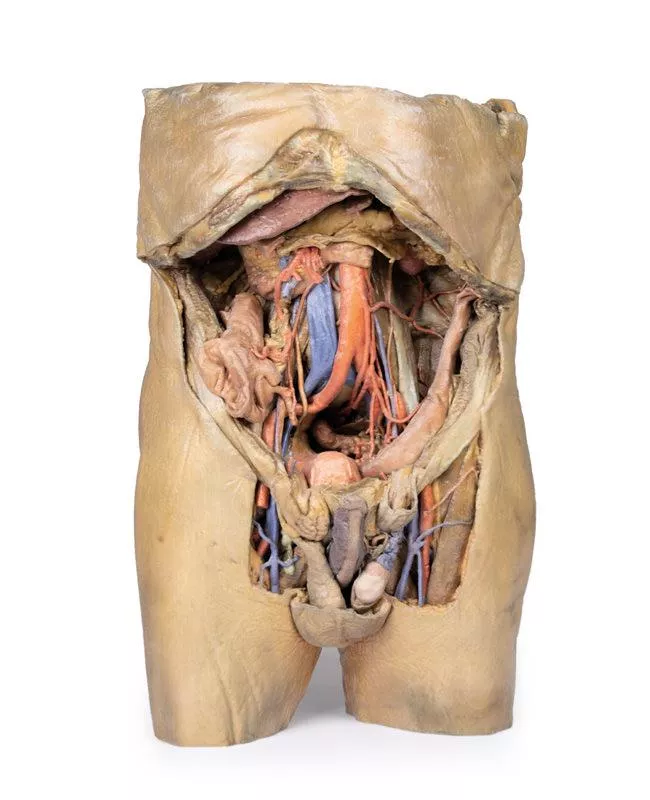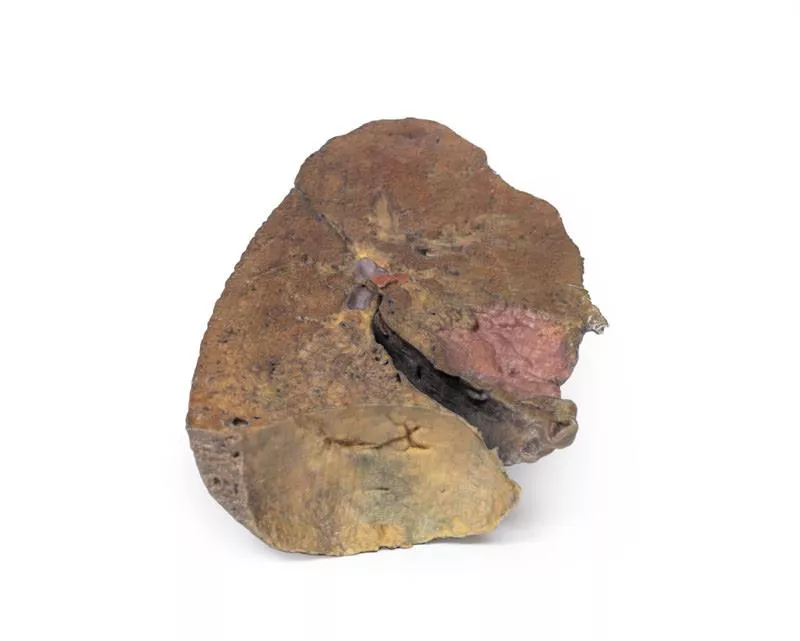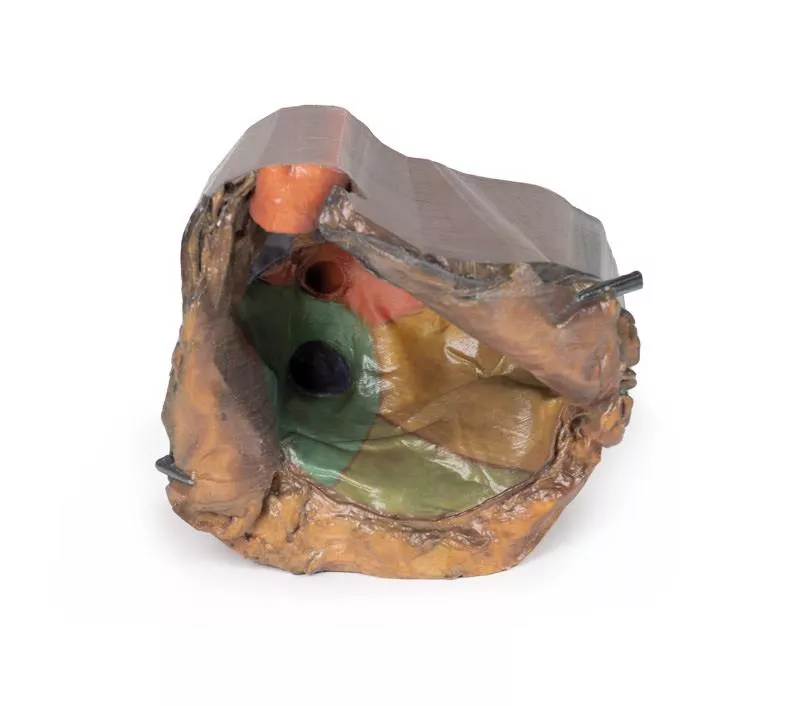Product information "Hilum of the left lung"
This high-resolution 3D model offers a detailed view of the left lung hilum and associated structures, sectioned sagittally through the cardiac notch. It clearly demonstrates the relationships between the bronchi, pulmonary vessels, pleura, and supporting structures, making it ideal for advanced anatomical education.
Key Features:
Hilum Anatomy:
- Entry/exit point for the pulmonary artery, superior and inferior pulmonary veins, main bronchus, lymphatics, and nerves.
- Shows the meeting point of visceral and parietal pleura, forming the pulmonary ligament—the lung’s sole anatomical connection to the body.
Pulmonary Circulation:
- Pulmonary artery (superior in position) carries deoxygenated blood from the heart.
- Pulmonary veins (anterior and inferior) return oxygenated blood to the heart.
Bronchial Structure:
Left main bronchus and its lobar branches are visible, located posteriorly within the hilum.
Additional Views:
- Oblique fissure along the lateral lung surface.
- Diaphragmatic surface at the base; costal visceral surface posteriorly.
- Pulmonary lymph nodes surrounding the hilum, both medially and laterally.
Key Features:
Hilum Anatomy:
- Entry/exit point for the pulmonary artery, superior and inferior pulmonary veins, main bronchus, lymphatics, and nerves.
- Shows the meeting point of visceral and parietal pleura, forming the pulmonary ligament—the lung’s sole anatomical connection to the body.
Pulmonary Circulation:
- Pulmonary artery (superior in position) carries deoxygenated blood from the heart.
- Pulmonary veins (anterior and inferior) return oxygenated blood to the heart.
Bronchial Structure:
Left main bronchus and its lobar branches are visible, located posteriorly within the hilum.
Additional Views:
- Oblique fissure along the lateral lung surface.
- Diaphragmatic surface at the base; costal visceral surface posteriorly.
- Pulmonary lymph nodes surrounding the hilum, both medially and laterally.
Erler-Zimmer
Erler-Zimmer GmbH & Co.KG
Hauptstrasse 27
77886 Lauf
Germany
info@erler-zimmer.de
Achtung! Medizinisches Ausbildungsmaterial, kein Spielzeug. Nicht geeignet für Personen unter 14 Jahren.
Attention! Medical training material, not a toy. Not suitable for persons under 14 years of age.


































